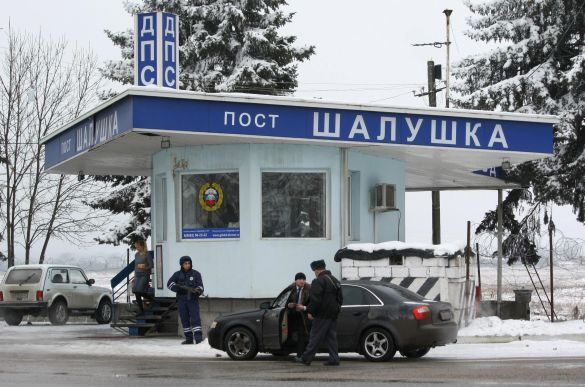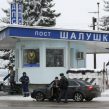
Government Helpless as Rebels Expand Operations in Kabardino-Balkaria
Publication: Eurasia Daily Monitor Volume: 8 Issue: 40
By:

On February 27, a counterterrorist operation regime in Kabardino-Balkaria was extended to parts of the republican capital Nalchik, and the Chegem and Cherek districts. The counterterrorist operation had been established earlier in parts of the Elbrus and Baksan districts. The introduction of a counterterrorist operation regime in much of Kabardino-Balkaria followed a series of brazen attacks in the republic against law enforcement personnel, tourists and tourism related infrastructure. In the latest episode, an insurgent unit believed to number approximately 12 fighters attacked several police checkpoints and a Federal Security Service (FSB) resort in Nalchik on February 25 (www.kavkaz-uzel.ru, February 27). Other sources report that 10 groups of rebels were involved in the attacks, five of which directly carried them out while the other five groups had auxiliary functions. The attacks were allegedly part of an attempt by the militants to seize some sort of total control in the republic (www.voanews.com, February 25).
The surprise simultaneous insurgent attacks in Nalchik revived memories of the massive October 2005 assault on the capital. In that raid, an estimated 200 rebels attacked the law enforcement agency buildings throughout Nalchik, leaving more than 130 rebels, servicemen and civilians dead. Although the security services easily put down the 2005 rebellion, the divisive effect of the clashes have plagued the republic ever since. Over 50 suspected participants in the uprising are still on trial in Kabardino-Balkarian courts.
While no people were reported being killed in the latest attack in Nalchik, its psychological impact was significant, because it took place when law enforcement agencies in the republic were already on high alert. A local observer, Aslan Beshtoev, speculated that the insurgents may have launched this attack in order to distract law enforcement and possibly regroup. Beshtoev said that the consecutive successes of the insurgents and the inability of the security services to thwart them were leading to fresh rebel attacks (www.ekhokavkaza.com, February 27).
On February 18, three tourists from Moscow were shot dead in Kabardino-Balkaria. On February 19, attackers blew up a cable-car support pole near Mount Elbrus and killed the local head of administration in a Nalchik suburb (www.gazeta.ru, February 19). The authorities used military aircraft to launch airstrikes against mountainous areas believed to be refuges for the rebels. Government sources stated that three to five rebels were killed in the clashes, but subsequently failed to confirm this information (www.kavkaz-uzel.ru, February 23).
Yet while the rebels have staged numerous attacks in Kabardino-Balkaria since February 18, no member of the insurgency has been captured or killed. President Dmitry Medvedev, presiding over a meeting of the Russian National Antiterrorism Committee in Vladikavkaz, North Ossetia, on February 22, promised harsh measures against the unrepentant insurgents (www.kremlin.ru, February 22). However, as of February 27, Medvedev’s tough talk had not translated into concrete blows against Kabardino-Balkaria’s insurgency.
Ibragim Yaganov, leader of a Circassian civil organization in Kabardino-Balkaria, stated that Moscow may be preparing a “Chechen scenario” in the republic. According to Yaganov, on March 1, 2011 there is likely to be an influx of Russian troops into Kabardino-Balkaria, paving the way for the introduction of despotic rule in this territory “as in Chechnya, but with less blood spilled.” Rising political activism among the Circassians in connection to the protest against the Sochi Olympics in 2014 may be the main reason behind the destabilization and subsequent hardening of the political climate in Kabardino-Balkaria, Yaganov stated (www.ekhokavkaza.com, February 26-27).
Residents of Kabardino-Balkaria are reportedly increasingly talking about a possible “civil war” in the republic. On February 25, following the attack on Nalchik, the homes of the families of two suspected rebels, the Mamishevs and the Shamaevs, were attacked with hand grenades. Earlier, a previously unknown organization, the Anti-Wahhabist “Black Hawks”, threatened to “eliminate” the Mamishevs if their family member, suspected rebel Astemir Mamishev, killed any more people in Kabardino-Balkaria. The sudden appearance of the group has aroused suspicion among some observers who claim the Black Hawks are made up of FSB personnel or possibly could be Circassian nationalists (www.kavkaz-uzel.ru, February 26).
Circassian civil activist Ruslan Keshev said that the Black Hawks group was simply contributing to the “chaos” in Kabardino-Balkaria. “The system of power became so rotten that it cannot respond to the actual challenges of our times,” Keshev said. A long time veteran of North Caucasian separatism, Musa Shanibov, stated that the conflict in the North Caucasus was in fact an anti-colonial war. Because of the longevity of conflict between the North Caucasians and the Russian colonialism, he said, “the war periodically changes its outward appearance, but it invariably returns to its natural state – a war for freedom” (www.voanews.com, February 25).
What appears to be a profound and enduring destabilization in Kabardino-Balkaria may have immediate implications for at least three other North Caucasian republics. The unfolding situation in Kabardino-Balkaria is likely to affect Adygea and Karachaevo-Cherkessia to the west. These two republics have vibrant Circassian minorities. In addition, Karachaevo-Cherkessia is dominated by ethnic Karachays, who are closely related to the ethnic Balkars in Kabardino-Balkaria. The Balkars, in turn, appear to be playing a very active role in Kabardino-Balkaria’s insurgency. Besides, all land transportation links connecting Russia proper to North Ossetia pass through Kabardino-Balkaria. If these links are seriously endangered, then it will have serious consequences for North Ossetia as well. Thus the changes in Kabardino-Balkaria have the potential to be of vital importance to the evolution of the North Caucasus and Moscow’s rule in the region.




